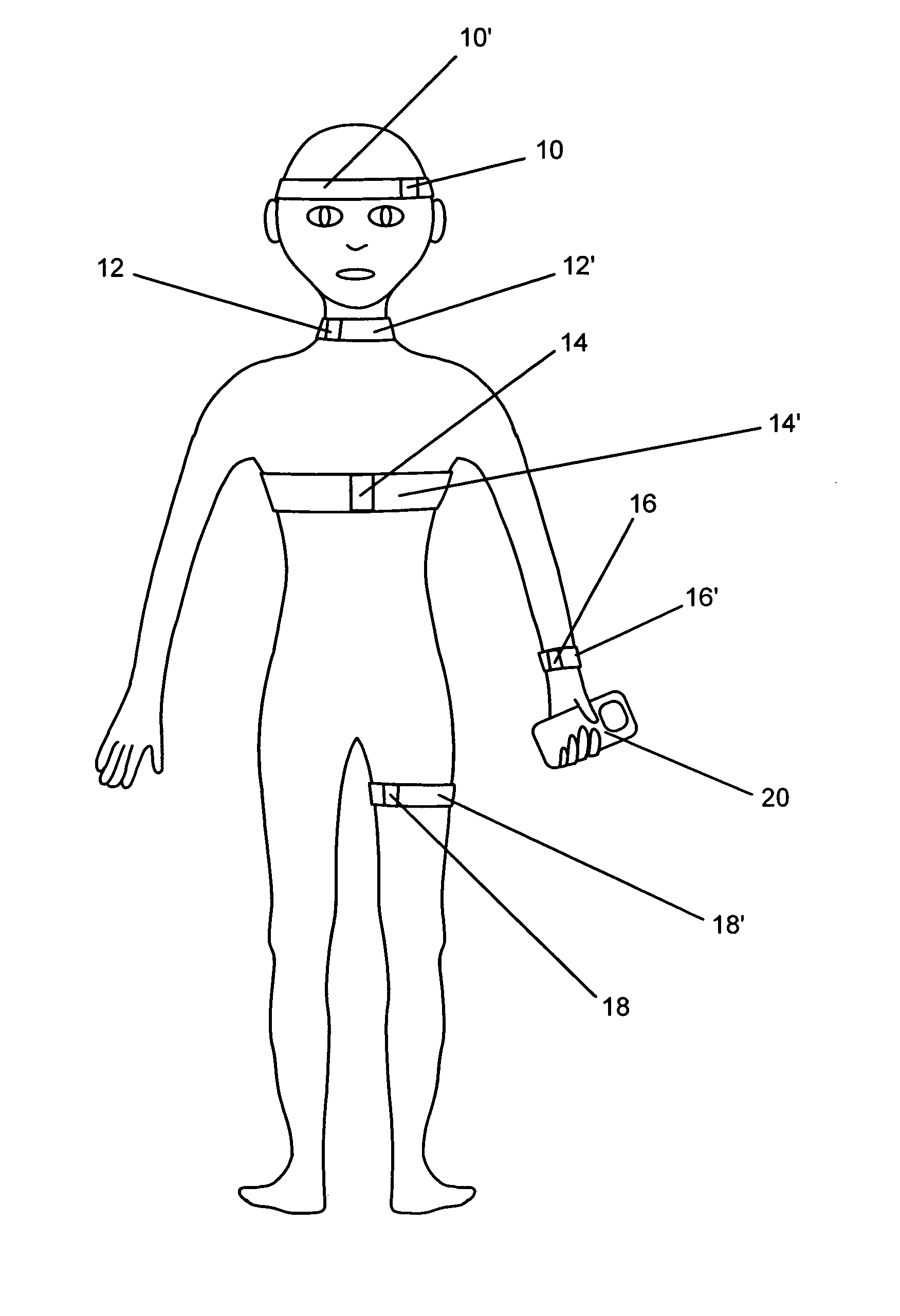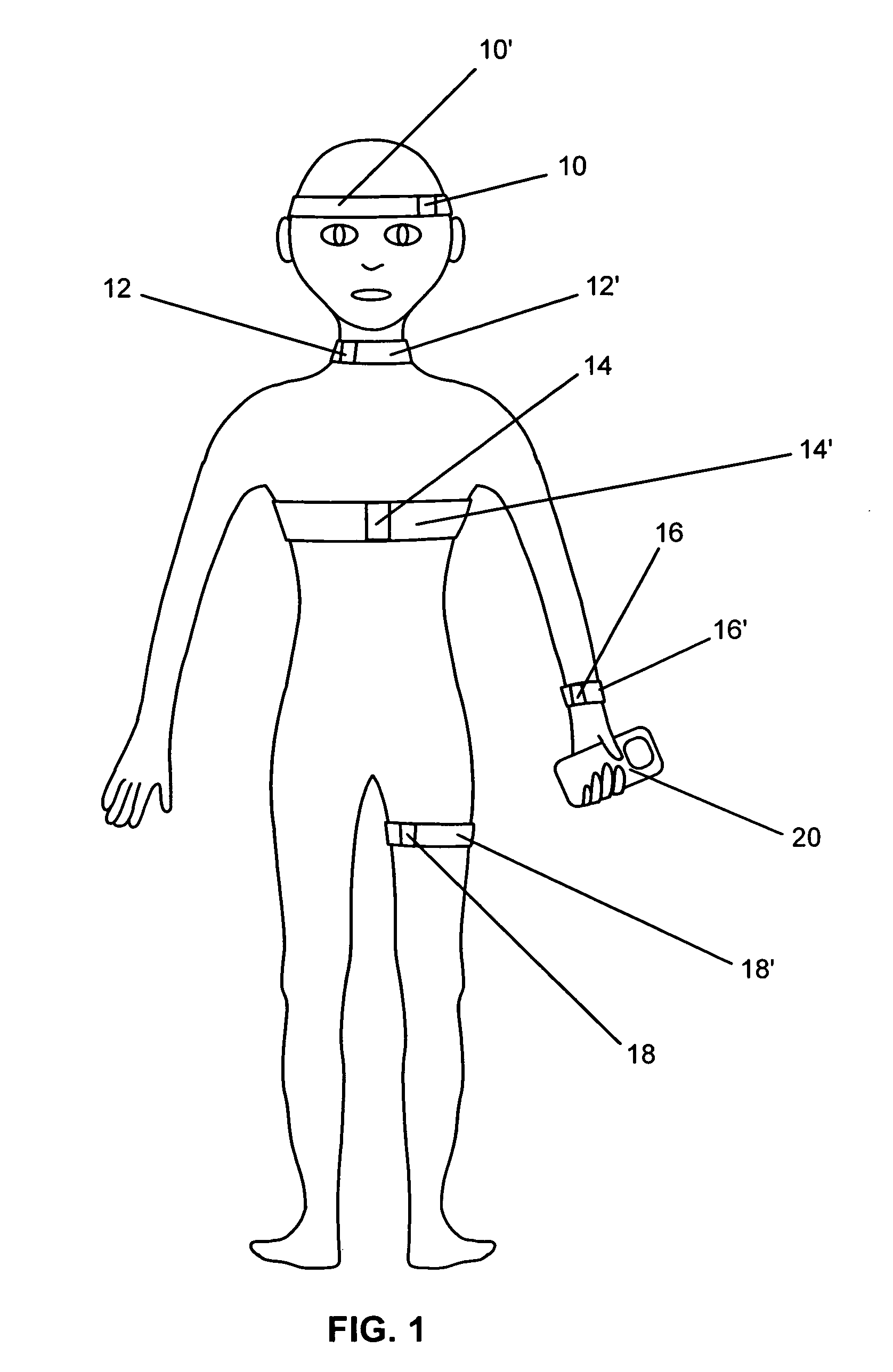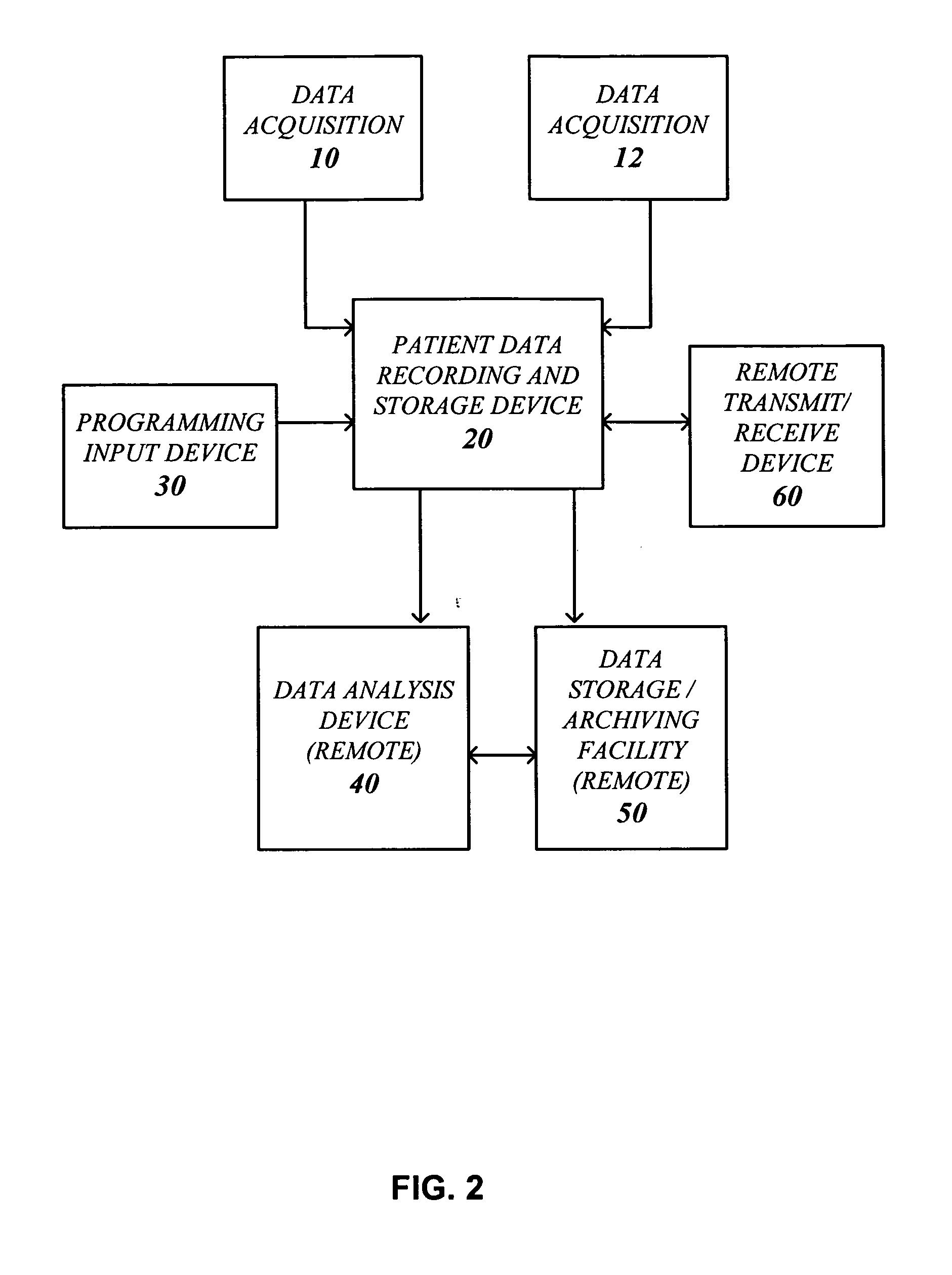[0027] A standard cardiac monitor with event capability provides
continuous recording of
respiration,
heart rate and event-triggered ECG. The measurements are compared periodically to a calibrated norm and recording of the ECG data is activated for the duration of an event or for a predetermined time period when acquired measurements deviate from the norm by a predetermined amount. This device may be used by
athletes, runners, cyclists, trekkers, climbers, patients undergoing cardiac
rehabilitation and subjects at risk for or evidencing symptoms of cardiac irregularities. A calculation of the amount of calories lost during a measurement or exercise period may be performed and displayed and a body temperature reading may be measured and displayed as well. The inclusion of a location identifying technology such as GPS and
wireless communication capability enables this
system to also serve as an alarm and provide speedy location of the subject. A
beacon function may be included to facilitate this safety-related use where
wireless operation is not possible.
[0028] Systems of the present invention may be employed as a highly effective child and infant monitor. Such a monitoring device may incorporate many of the functions identified above. The child's respiration may be continuously monitored and any meaningful deviation from a predetermined or empirically determined standard may trigger an audible alarm both at the
data acquisition device and at the matched
receiver device. This type of child monitoring device may additionally incorporate heart rate and / or
ECG monitoring capability that may be automatically activated and monitored or that may be activatable by a companion
receiver / controller device. This
system may be set up so that a parent or supervisor may monitor location and communicate (two-way) with the child at any time by remote. In the event of anyone tampering with the child, the child could push an alarm button activating the alarm to the parent and turning on the VHF
transmitter and / or GPS and
microphone. This would also occur automatically if anyone tried to tamper with or remove child's
monitoring system. An on-site alarm and
beacon may be incorporated for added safety.
[0029] Systems of the present invention that monitor respiration and / or heart rate and / or ECG may also be used for detection of
sleep apnea without requiring a subject to stay at a specialized laboratory or wear uncomfortable
breathing monitors. The
system described herein allows detection of
apnea and other abnormalities in a subject's own home, at a low cost, and can be used to monitor the success of any therapy instituted. The system may also detect respiratory depression in infants and children, and can therefore be used to detect and prevent SIDS by monitoring the
breathing status of children during sleep.
[0037]
Blood flow monitoring and emboli detection methods and systems that monitor a carotid
artery, for example, may operate in one or more
modes. A carotid
artery monitoring
regimen may involve acoustically illuminating (scanning) a relatively large
tissue volume and analyzing received acoustic signals from a relatively large
tissue volume to identify the location of the
artery within a larger region of tissue. Thereafter, a focused acoustic beam may be aimed to acoustically illuminate substantially an entire cross-section of the artery, or one or more focused acoustic beams may be aimed simultaneously or sequentially to illuminate distinct smaller volumes within the cross-section of the artery. Acoustic detection patterns may match the transmit patterns or may differ from the transmit patterns. A multi-frequency
acoustic array may be used in conjunction with multi-frequency transmit and detection schemes to provide enhanced detection of desired events and conditions, such as the presence of emboli.
[0038] Systems of the present invention provide
long term monitoring of
ambulatory patients to identify events and abnormalities that are asymptomatic and / or infrequently experienced and also provide effective assessment of
treatment regimen. They are suitable for use with ambulatory subjects and may also be used in non-ambulatory applications such as in hospital rooms, surgical suites, ambulances,
nursing and other
long term care facilities, and the like.
Integrated monitoring systems, for example, may be employed to provide comprehensive patient monitoring within a hospital or institution at a fraction of the cost of conventional monitoring equipment. At present, hospitals have only a fraction of their beds monitored, and the only monitoring systems are
cardiac monitoring devices that require operation by trained nurses. A very small percentage of cardiac arrest patients in-hospital survive, due to the very critical few minutes before the code team gets to them. Alarm and notification systems of the present invention alert nurses or other care-givers in a residential or hospital facility, or monitoring professionals in a remote monitoring facility and expedite the delivery of essential and appropriate care and intervention. Methods and systems of the present invention can be used to notify
medical staff at the very early moments of a respiratory or cardiac arrest or of a major embolic event or
blood flow abnormality, thereby greatly increasing the chances of a successful outcome.
 Login to View More
Login to View More  Login to View More
Login to View More 


